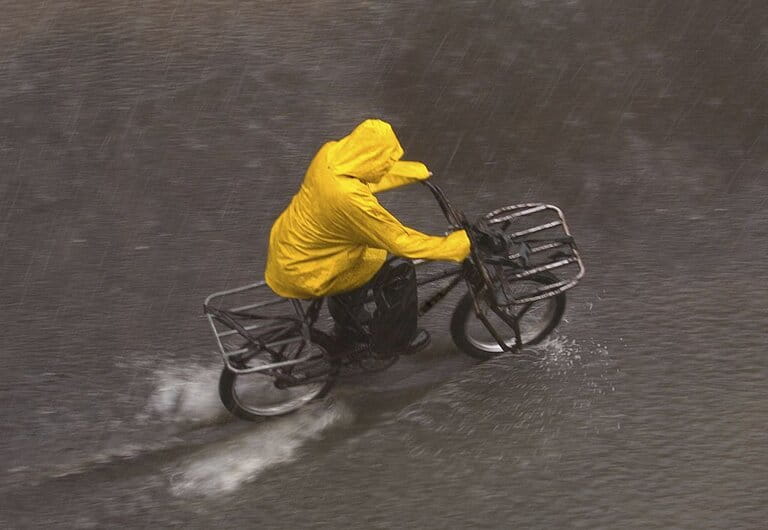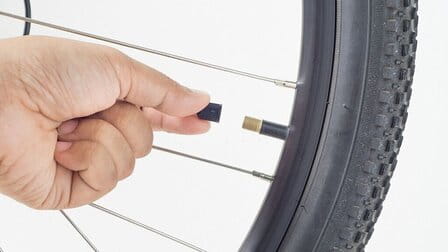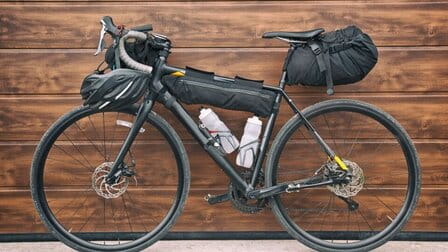Cycling is not just a means of transportation; it's a way of life for many enthusiasts. Whether you ride for fitness, pleasure, or as your primary mode of commuting, your bike is your trusted companion. However, when the rain starts to fall, it can put a damper on your cycling plans. Not only does cycling in the rain make for a less enjoyable ride, but it can also have detrimental effects on your bike if you don't take the necessary precautions.
In this comprehensive guide, we'll delve into the various challenges rain poses to your bicycle and explore an array of strategies and techniques to help you protect your beloved two-wheeler from the elements. By the end, you'll have a thorough understanding of how to safeguard your bike during wet weather and ensure its longevity and peak performance.
The Challenge of Rain for Your Bike
Rain can be a formidable adversary for your bike. It presents several challenges and potential problems that, if not adequately managed, can lead to damage and a less enjoyable cycling experience. Here are some of the key challenges posed by rain:
1. Corrosion
Water is one of the primary agents of corrosion, especially when it comes into contact with metal components. Your bike contains various metal parts, including the chain, gears, bolts, and cables, all of which are vulnerable to corrosion when exposed to rain. Over time, corrosion can weaken these components, compromising their structural integrity and functionality.
2. Brake and Gear Performance
Wet conditions can significantly affect the performance of your bike's brakes and gears. Rainwater on the brake pads and rims can reduce braking efficiency, leading to longer stopping distances. Additionally, moisture can affect gear shifting, resulting in imprecise or delayed gear changes. Both of these issues not only diminish your bike's performance but also pose safety risks.
3. Tire Traction
Rain-soaked roads can dramatically reduce tire traction. When your bike's tires have less grip on wet surfaces, it becomes challenging to maintain control, especially when navigating corners or sudden stops. Slick tires can lead to skidding, loss of balance, and accidents.
4. Paint and Finish Damage
Continuous exposure to rain can damage your bike's paint and finish. The moisture can cause the paint to peel, fade, or develop rust spots, making your bike look worn and aged. This not only affects its aesthetic appeal but can also reduce its resale value.

How To Cover Bike From Rain
Now that we've identified the challenges, let's explore a range of effective solutions to protect your bike from the rain and minimize its impact:
1. Invest in Quality Fenders
Fenders are your bike's best friends in wet conditions. They are essential for shielding your bicycle from the water, mud, and debris that rain can kick up. Here's what you need to do:
Select Appropriate Fenders: Ensure the fenders you choose are compatible with your bike's frame and tire size. Investing in front and rear fenders will provide comprehensive protection from splashes.
Proper Installation: Ensure that the fenders are correctly installed and adjusted to maximize their effectiveness. Properly fitted fenders will prevent water from being thrown onto your bike and yourself.
2. Apply Frame Protection
To prevent damage to your bike's frame, consider applying a protective film or clear coat. These protective measures create a transparent, water-resistant barrier that safeguards your bike's surface:
Application Process: Follow the manufacturer's instructions for applying the protective film or clear coat. Be thorough and ensure complete coverage to deter moisture from reaching the frame.
Regular Inspection: Periodically inspect the protected frame for signs of wear or damage to the protective layer. Reapply as needed to maintain optimal protection.

3. Regularly Clean and Lubricate Your Bike
Cleaning and lubricating your bike's drivetrain (chain, cassette, derailleurs, and cables) after wet rides is essential for its longevity and performance:
Cleaning: Use a high-quality bike-specific degreaser to thoroughly clean the drivetrain and remove grime and water. Pay special attention to the chain, as it is prone to corrosion.
Lubrication: After cleaning, apply a suitable wet-weather chain lube. Wet lubes are designed to repel water and provide adequate lubrication in wet conditions. Ensure that you follow the manufacturer's instructions for lubricant application.
Regular Maintenance: Make cleaning and lubricating your bike a regular part of your maintenance routine, especially after wet rides.

4. Use Waterproof Accessories
Invest in waterproof accessories to provide an additional layer of protection for your bike's critical contact points. Here are some key accessories to consider:
Saddle Cover: A waterproof saddle cover prevents water from soaking into your saddle, keeping it dry and comfortable.
Handlebar Tape: Waterproof handlebar tape helps maintain a secure grip, even in rainy conditions.
Seat Post Cover: A seat post cover shields your seat post from moisture, preventing it from becoming a source of rust.

5. Keep Your Bike Indoors
Whenever possible, store your bike indoors, away from the rain. If you don't have a dedicated indoor space for your bike, consider these options:
Bike Storage Rack: Invest in a bike storage rack that allows you to hang your bike indoors. This not only protects it from the rain but also helps save space.
Bike Cover: If indoor storage is not available, use a high-quality bike cover. This cover should be made from waterproof and UV-resistant materials to withstand the elements. Ensure that it fits your bike snugly to prevent water from seeping in.

6. Consider a Bike Cover
In situations where you need to leave your bike outdoors for an extended period, a high-quality bike cover is indispensable:
Waterproof and UV-Resistant: Look for a cover made from waterproof and UV-resistant materials. Such covers can withstand prolonged exposure to rain and sunlight without deteriorating.
Snug Fit: Ensure that the bike cover fits your bike snugly, leaving no room for rain to penetrate. Covers with adjustable straps or drawstrings are ideal for achieving a secure fit.

7. Choose the Right Tires
Selecting the appropriate tires for wet conditions can significantly improve your bike's traction and handling:
Tread Pattern: Opt for tires with a tread pattern designed for wet roads. These tires have better grip on slippery surfaces.
Lower Tire Pressure: Lowering your tire pressure slightly increases the tire's contact area with the road, enhancing grip. However, be cautious not to lower the pressure excessively, as it can lead to pinch flats.
8. Brake Pads and Braking Technique
Brakes are a critical safety component of your bike, and their performance is crucial in wet conditions:
High-Quality Brake Pads: Invest in high-quality brake pads specifically designed for wet weather. These pads provide better stopping power in the rain.
Braking Technique: When riding in wet conditions, apply your brakes earlier and with gentle, gradual pressure. This technique prevents sudden skidding and allows for better control.
9. Dry and Store Wet Gear Properly
After a rainy ride, it's essential to remove any wet accessories or gear from your bike. This prevents moisture-related damage:
- Saddlebags, Lights, and Electronics: Take off any accessories that might have been exposed to rain and ensure they are dried thoroughly before reattaching or storing.
10. Use a Bike Bag or Panniers
If you need to transport items on your bike in the rain, consider using bike bags or panniers designed to keep your belongings dry:
- Waterproof Bags: Opt for bags made from waterproof materials and equipped with sealed zippers or roll-top closures. These features offer excellent protection against rain.

Conclusion
Cycling in the rain can be a refreshing and invigorating experience, but it's crucial to take steps to protect your bike from the adverse effects of wet weather. By investing in quality fenders, applying frame protection, performing regular maintenance, and using waterproof accessories, you can ensure your bike remains in excellent condition, even when the skies open up.
Proper storage, tire selection, brake maintenance, and gear care are also crucial aspects of rain riding. With the strategies outlined in this guide, you can confidently face wet weather and continue enjoying the freedom and adventure that cycling brings, regardless of the forecast. Your bike will thank you with smooth rides and long-lasting performance, rain or shine.













